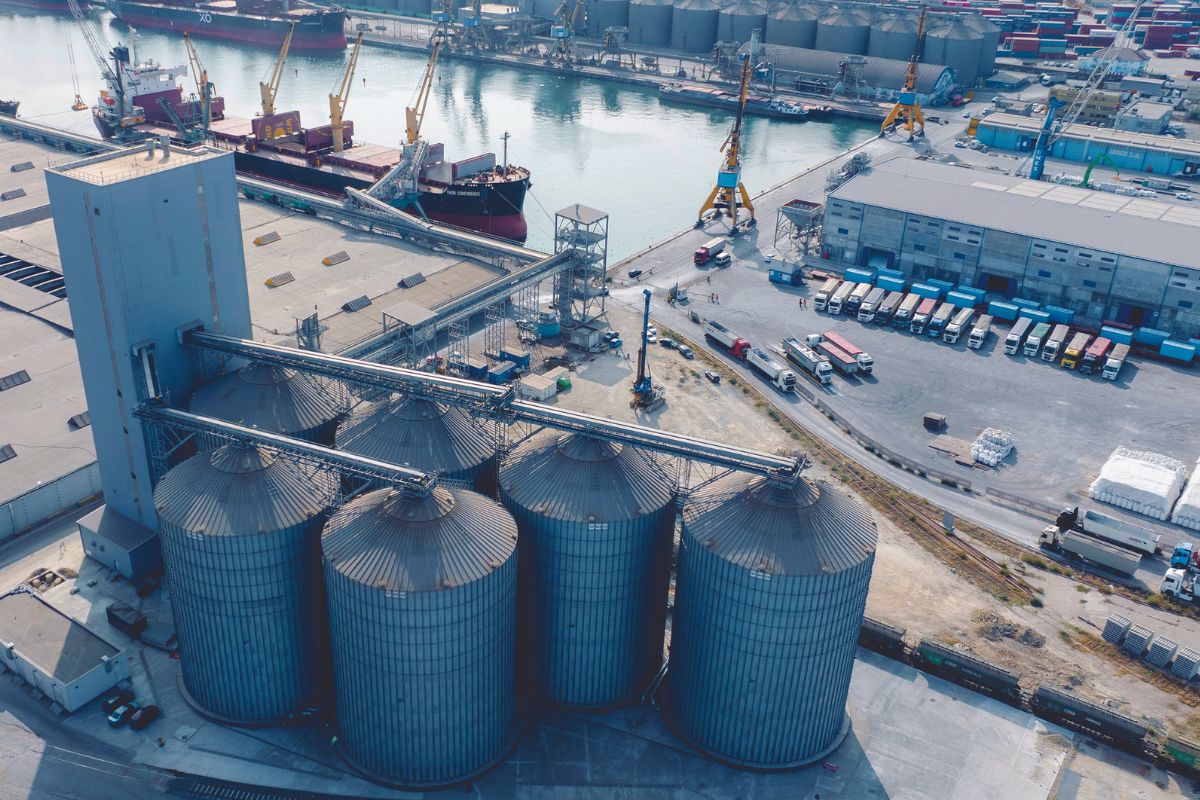CONSTANTA, HUNGARY — Romanian-based port operator SOCEP is currently on the path to ramping up its grain handling capabilities to keep pace with the increasing influx at the Port of Constanta. Since Russia’s invasion of Ukraine in February 2022, Constanta has emerged as Kyiv’s largest alternative export route. Grains have been streaming in from all directions — over land, by rail, and down the Danube River.
In a significant uptick, the port handled 36 million tonnes of grain in 2023, marking a 50% increase from the year before, largely due to a boost in Ukrainian shipments. This surge has been supported by an infusion of European Union funds totaling almost €550 million directed toward enhancing the infrastructure in and around the port and continuing into 2024 alongside upgrades initiated by port operators themselves.
In December 2023, the Romanian Transport Minister highlighted the completion of the EU-funded Sulina Canal project, which promises year-round navigability to the port, pending final staff training.
Ukrainian grain notably composed about 40% of Constanta’s grain trade in 2023. With an eye on future needs, Romania is proactively improving the port’s infrastructure and connections to handle up to 4 million tonnes of Ukrainian grain per month, ensuring Constanta remains a pivotal player.
Looking to expand operational capacity, SOCEP SA — an established port operator situated in the Port of Constanta — is set to install yet another silo plant supplied by Switzerland-based Bühler AG. The project features Bühler’s Portaload ship loader and a suite of advanced Bühler conveying systems, signaling another leap in SOCEP’s commitment to top-tier infrastructure.
Phase 1 of project
In 2019, Bühler Grain Quality & Supply began constructing a 50,000-tonne grain terminal and ship loader for SOCEP, known as Phase 1. This silo complex, completed in 2022, contains a comprehensive Bühler-provided system of chain and belt conveyors, elevators, and all necessary gearmotors equipped with couplings and consoles, all controlled by Bühler’s WinCos automation system.
Key features include:
- Six steel silos with a total storage capacity of around 50,000 tonnes.
- Intake facilities (two truck intakes and one train intake) each capable of 400 tonnes per hour.
- A variety of chain and belt conveyors and elevators with capacities ranging from 400 to 800 tonnes per hour.
- Comprehensive dedusting systems.
- Bühler’s 800 t/h capacity “Portaload” ship loader.
Phase 1 was followed by a barge unloading line from Bühler in 2023. This installation enables highly efficient unloading of barges, allowing silo storage and/or direct transfer from the ship loader to large vessels. The terminal was designed with high-performance equipment that meets the latest requirements regarding sustainability and environmental protection.
The barge unloading line is an intermediate phase in the full plant silo development linking Phase 1 and Phase 2 (expected to be operational in 2024) and establishing a seamless addition to SOCEP’s train and truck intakes.

The SOCEP silo complex at Port of Constanta includes a Bühler-provided system of chain and belt conveyors, elevators, and all necessary gearmotors equipped with couplings and consoles, all controlled by Bühler’s WinCos automation system.
| Credit: ©SOCEPPhase 2
As 2023 ended, SOCEP had secured the purchase of an additional 50,000-tonne grain terminal and ship loader for Phase 2, with Bühler providing the entirety of cutting-edge technology, equipment, automation, and services. This significant acquisition — which again includes silos, conveying systems and a ship loader — represents another substantial investment of nearly €10.4 million, paving the way for improved port operations to meet future demand.
After completion of the new installation, SOCEP will reach a minimum storage capacity of 250,000 tonnes for heavy and oleaginous grains. This expansion also will enable the handling of Panamax vessels, boasting 65,000-dwt to 67,000-dwt capacity at a draft of up to 13.5 meters at the terminal.
Currently, the grain terminal achieves a ship loading rate of approximately 800 tonnes per hour, thanks to a Bühler ship loader introduced in the first development phase. The ongoing second phase is expected to boost this capacity to an estimated 1,600 tonnes per hour, which will be facilitated by an additional Portaload ship loader.
Prioritizing partnership
Acknowledging the importance of collaboration, Bühler and SOCEP have been prioritizing partnership over a standard supplier relationship, the companies said. Collaborating closely is essential to both developing and implementing optimizations within the project, thereby ensuring outcomes that are tailored to SOCEP’s unique requirements, Bühler said.
To facilitate this collaborative spirit, Bühler said it works together with its regional Romanian sales organization and has established a comprehensive and dedicated communication and customer support network, ultimately leading to a more successful project and a strong and hopefully long-lasting partnership.
Susanne Pfaller may be reached at susanne.pfaller@buhlergroup.com.





